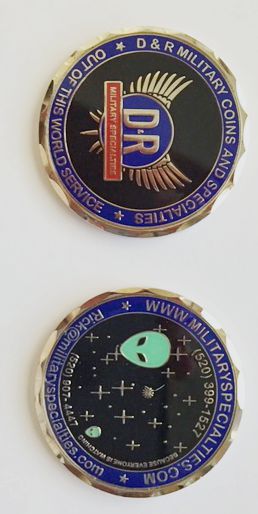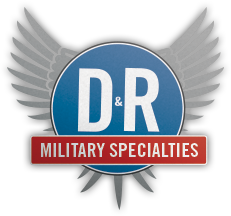I have written about this several times before. Judging from the emails I get it appears that some believe I am an expert and appraiser. Collecting and appraising Challenge Coins has become quite a thing. Let me be clear from the start that I definitely claim to be neither. And let me assure all who are reading this that I am not offering for sale any coins that I have made for others.
Today I was looking at an auction site. I rarely do this. I saw several coins that we have made. It is kinda’ gratifying to see these works given collector value by others. That said, we need to be clear about something. Authentic challenge coins that are presented to someone are very special. They may represent excellence at work or even valor in combat. Sadly some are presented posthumously. That is why I do not take what I do lightly. Long after I am gone these will live on and I hope become heirlooms passed down from generation to generation. That is what I hope and that is what happens very frequently. But the fact of life is that sometimes these coins are offered for sale.
In THIS article from a few years ago I discussed fake challenge coins. On my tour of ebay today I sure spotted a bunch of them. In my next article I plan to discuss how to authenticate a challenge coins so look for that.
Appraising Challenge Coins
Remember that I do not claim to be an expert? OK. It seems to me that there are primarily three things that make challenge coins valuable. First and foremost is whose coin it is. Clearly Colon Powell’s coin is more valuable than Corporal Smith’s coin. And yes I did make a military coin for a corporal a few years back and I treasure it. But here is where things get counter intuitive. One would think that when collecting and appraising challenge coins scarcity would be a big thing. Perhaps it is but I am here to tell you that Colon Powell gave out, probably, thousands of coins but that corporal only made 25. So with my three archive copies that means that in the whole world “Corporal Smith’s” coin is far rarer that the four star generals coin.
The second thing that affects value is authenticity. There is absolutely nothing wrong with someone buying a First Armored Division challenge coin made to sell individually. If you like it, buy it. But it is not the same thing as a First Armored Division Commander’s coin. It would seem to me that the later would be far more valuable than the one made to sell to collectors. Or it ought to be, though it is sad that the original owner no longer has it. (Check out the next section.)
The third factor is one I call the GI WANNABEE coin. I am a retired soldier so you can believe me or not, when I say that I can’t even remember all of the many many times that someone has told me they were a Navy Green Beret or an Air Force Seal or some other nonsensical thing like that. And, it will also not surprise any service person when I say that some of these fools will reach into their pocket and pull out a coin to show off their “credentials”. Just the other day someone pulled out a coin to show me that he had been a member of one of the Special Forces Groups. It just so happens that I make the coin from that group and the one he pulled out made some fake coin manufacturer a bit on cash. You want to know, right? Yes I told him it was a fake.
Perhaps “fake is too strong a word.
What is a “Fake” Challenge Coin?
I want to be careful here. Though I would not do it there are a great many manufacturers who would find no issue in making a, what shall we call it, let’s say, “commemorative” coin for a famous unit. So when a young soldier buys a First Armored Division (one of my old units) coin in the PX to send to his parents I think that is nice. It is quite another thing to make a coin, sell it on eBay, and claim that it is a genuine coin presented to a unit member. And we see this kind of thing all of the time. If I had a dollar for every fake (or if you prefer commemorative “Seal Team Six” coin for sale on eBay I could buy my wife something very nice. Ahem….
So what is that coin worth? It is worth whatever someone will pay for it of course. But that is a cop out. Here is how I would decide whether I was going to buy one if I didn’t own a coin company.
First I would be sure that the coin was authentic. That is key. Someone’s claim on an auction site notwithstanding I would check my sources. And their feedback won’t work for me in this regard.
Then I would decide what owning this coin is worth to me. What will I do with it? What is my purpose for just owning it. I will digress for a moment and say a word to that guy who wants to use it to impress his friends. Look guy. We know the deal and we are not impressed. If you want to be an Army Ranger why don’t you man-up and be one? Slapping a coin on the bar won’t make you a Ranger but it might get a laugh from one. If you are lucky.
Third, what will the value of this coin be in the future? As challenge coin collecting becomes more popular, will this coin likely appreciate in value.
Finally. If you are going to have to research your coins and authenticate them why not try collecting a theme? Maybe you collect political challenge coins. Or maybe you might like collect military coins from the artillery. And when you get the First of the Whatever Field Artillery Commander Coin, you might look up the unit, find out the bio of the commander who presented it and keep the two together. Now you have a nice historical document.
So this is a quick start on Collecting and Appraising Challenge Coins. More to follow for sure. I owe you some more on authentication. I have some ideas that will help you do that. So check back in a couple of weeks and see what we have written.
Thanks for reading my ramblings and if you have any questions about making coins for your Unit, your organization or ??? please give me a call. I am happy to talk with you about them.

(Glows in the dark. Really. It does.)
This one is authentic. It is mine:)
